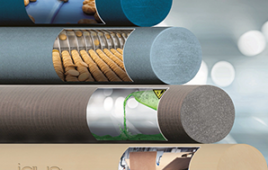Draw a line with a pencil and it’s likely that somewhere along that black smudge is a material that earned two scientists the 2010 Nobel Prize in Physics. The graphite of that pencil tip is simply multiple layers of carbon atoms; where those layers are only one atom thick, it is known as graphene.
Read: Understanding Graphene’s Electrical Properties on an Atomic Level
The properties of a material change at the nanoscopic scale, making graphene the strongest and most conductive substance known. Instead of marking mini-golf scores on paper, this form of carbon is suited for making faster and smaller electronic circuitry, flexible touchscreens, chemical sensors, diagnostic devices, and applications yet to be imagined.
Graphene is not yet as ubiquitous as plastic or silicon, however, and producing the material in bulk remains a challenge. Because graphene’s properties rely on it being only one atom thick, until recently, it was only possible to make it in small patches or flakes.
Physicists at Penn have discovered a way around these limitations, and have spun out their research into a company called Graphene Frontiers.
Filed Under: Materials • advanced




